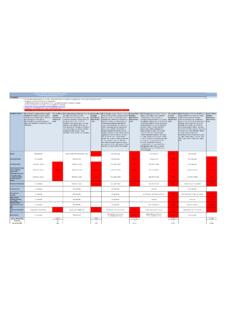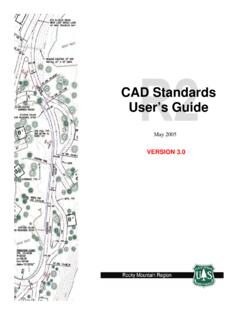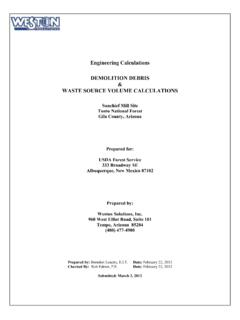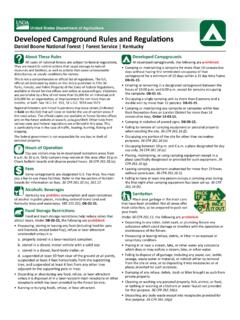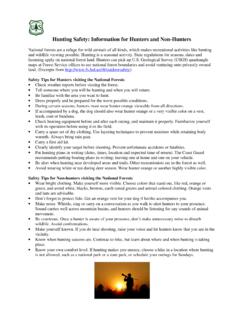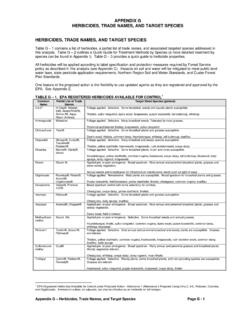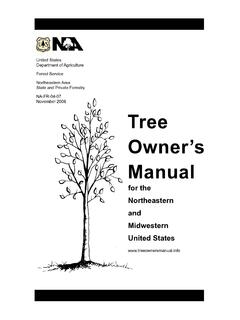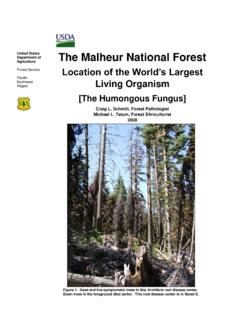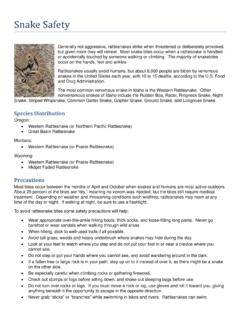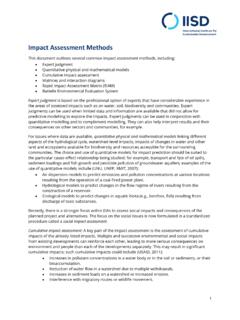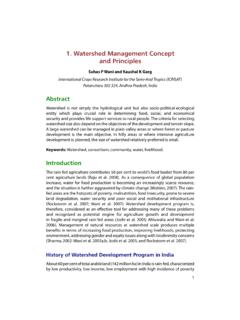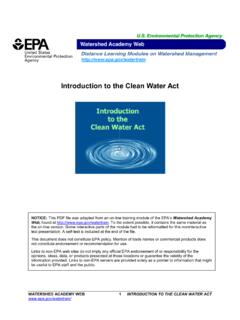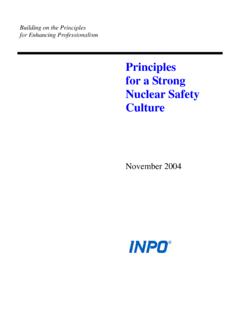Transcription of CONFRONTING THE WILDFIRE CRISIS
1 Forest DEPARTMENT OF AGRICULTUREFS 1187b | January 2022 CONFRONTING THE WILDFIRE CRISISWILDFIRE CRISISI mplementation PlanA 10-YEAR IMPLEMENTATION PLANC over photo: Spring prescribed burning on the Bitterroot National Forest, MT. USDA Forest Service pile burning after mechanical treatment on the Rogue River-Siskiyou National Forest, OR. USDA Forest Service in the West have been growing in size and severity, placing homes, communities, infrastructure, and natural resources at grave and growing risk. Growing WILDFIRE risk is due to past fire exclusion and accumulating fuels, a warming climate, and expanding development in the wildland-urban interface. Impacts have far-reaching effects on human health, the economy, community well-being, and the environment, including to areas important for water, carbon, and wildlife.
2 This is a national emergency, and it calls for decisive action. In response, at the Department of Agriculture (USDA), Forest Service, we have released a 10-year strategy, and are now developing a comprehensive implementation plan for working with partners across jurisdictions to reduce WILDFIRE risk to people, communities, and natural resources while sustaining and restoring healthy, resilient fire-adapted forests. This implementation plan will focus on changing the trajectory of risk by: Identifying the right locations and tools for fuels and forest health treatments that are science-based and equitable. Developing needed workforce capacity and investing in the enabling conditions required for success. Working with partners across jurisdictions to develop and implement projects that are landscape scale, outcome-driven, and community ready.
3 Supporting planning and investments in fire-adapted communities and on partnerships to restore and reforest areas already impacted by fire and mitigate risks associated with postfire disaster events. The Bipartisan Infrastructure Law provided an essential down payment on the resources we need to perform this work. Funds will help accomplish the hazardous fuels and forest heath, ecosystem restoration, community preparedness, and postfire recovery and reforestation work called for in the 10-year strategy and described in this implementation plan. We will coordinate with the Department of the Interior and other Federal agencies as we engage partners and work together to implement this historic legislation. This implementation plan is grounded in the recognition that this is shared work that will take cooperation and coordination across jurisdictions and with many partners.
4 This includes continued close coordination and work with our sister land management agencies at the Department of the Interior and with other Federal partners to bring an all-of-Government approach to this challenge, especially as we work together to implement the Bipartisan Infrastructure Law. It includes close coordination and work with States, Tribes, local communities, private landowners and partners in the public and private sector, including conservation organizations, forest industry, utilities, and academia. It will also require continued focus and work with partners to ensure equity and environmental justice are built into the design and implementation of this is intended to be a living document: it will be informed by engagement and will be updated periodically based on coordination with other Federal agencies; consultation with Tribes; engagement with States, communities, and public and private sector partners; new information about values at risk; and new information about available resources.
5 We look forward to engaging with partners to meet this challenge together. 12 NATIONAL STRATEGY TO REDUCE WILDFIRE RISKThis implementation plan builds on a national strategy for CONFRONTING the WILDFIRE CRISIS facing the Nation. The strategy calls for an unprecedented paradigm shift in land management to increase fuels and forest health treatments across jurisdictions to match the actual scale of WILDFIRE risk to people, communities, and natural resources, especially in the Western United States. Over a period of 10 years, the proposed strategy calls for:(1) Treating up to an additional 20 million acres on the National Forest System in the West, over and above current treatment levels;(2) Treating up to an additional 30 million acres on other Federal, State, Tribal, and private lands in the West; and (3) Developing a plan for long-term maintenance beyond the 10 recent years, at the Forest Service, we have treated 2-3 million acres per year for fuels and forest health across the Nation.
6 Treatments typically involve thinning fuels and removing vegetation to reduce heavy fuel loads that can increase the risk of extreme WILDFIRE events and using a risk-based approach to restore healthy fire to fire-adapted ecosystems. We will work with partners using a science-based approach to determine where to prioritize treatments and identify the appropriate tools, including prescribed fire and mechanical thinning to reduce hazardous fuels, change fire behavior, accomplish restoration objectives, and create healthier and more fire-resilient forests. These treatments work in concert with community, infrastructure, watershed , and other investments to protect values at riskUnder the 10-year strategy, we will fully sustain and slightly increase current treatment levels in the South, Midwest, and Northeast.
7 But most additional investments will be in the West, where the WILDFIRE risk to homes and communities is map on the following page shows the firesheds with the highest risk of community exposure to WILDFIRE from ignitions on all lands. It shows that a small number of firesheds present the largest risk to communities, based on historic fire behavior: in fact, less than 10 percent of fire-prone forests in the West account for roughly 80 percent of the fire risk to communities. Using this map, we can engage with Tribes, States, local communities, private landowners, and other partners to identify shared priorities for hazardous fuels treatments within these firesheds so that we can meaningfully reduce risk to communities. We can also work together to identify priorities for treatments in additional firesheds based on other values at risk and maintain prior investments in fuels and forest health.
8 We are currently working to develop additional information about risks to water, carbon, and wildlife, including old-growth forests, as well as risks to socially disadvantaged and underserved communities. Work with partners to identify risks to critical infrastructure, social, cultural, and economic values, and the incorporation of Indigenous and traditional ecological knowledge will be important to inform shared priorities and project design. Building on the 10-year strategy, this implementation plan outlines a blueprint for developing and carrying out this work through partnerships and collaboration. The Forest Service, the Department of the Interior, other Federal agencies, Tribes, States, local communities, landowners, and other partners have an unprecedented opportunity for investment in this work through the Bipartisan Infrastructure Law.
9 Those investments help to provide the resources needed to implement this plan at scale and truly change the trajectory of risk to people, communities, and natural resources at this pivotal FIRESHEDSC ommunity exposure is a central factor in the strategy to confront the WILDFIRE CRISIS . Other factors include Tribal and State plans, watersheds, equity, climate forecasts, and partner PLANNING GUIDELINESThe strategy and implementation plan are based on peer-reviewed research and a framework for collaboration established over the past 20 years with other Federal, State, Tribal, local, and private partners. The following guidelines will support how we, at the Forest Service, approach this work: SCIENCE. Decisions about priority areas for fuels treatment and the design of fuels treatments will be grounded in the best available science, including science that incorporates traditional and Indigenous ecological knowledge and recognizes the value of projects based on traditional knowledge in consultation with local Tribes.
10 Land managers will incorporate emerging data and technology into project design, along with a knowledge of historical stand conditions and structure. Other scientific tools, like potential operational delineations (PODs), fire behavior models, and information on ecological integrity for specific forest types will guide treatment placement and design. New information about changing climate conditions, drought, and other weather behavior that impacts fire risk will also be incorporated to inform work during the implementation period. EQUITY AND INCLUSION. We will make investments to increase equity and inclusivity, reflecting the need to reach underserved communities, build community capacity, and overcome barriers through informed consent from those affected.
